The 21st Century’s Most Meaningful Animated Shorts
The word “animation” derives its meaning from the Latin “animationem“, stemming from “animare”, which means to give life to and to bestow a courage upon, and the Latin “anima”, meaning life or breath, where we get the word “animal”. Animation, in itself, should be no foreign thing to anyone, since it has often dominated the realm of childhood movies since the prevalence of the television. Traditional hand-drawn animation dates back to the early 1900s, but the large boom of production in this medium only arrived in the 1920s, preceded by the prevalence of animated shorts more widely known as “cartoons”, which yielded popular icons such as Gertie the Dinosaur and Felix the Cat. The Golden Age of Cartoons began in 1920, where many theatrical shorts were made and produced to be shown prior to the screening of a feature film in a theatre. Many companies that dominated the medium are the ones we still know of today: Disney created a series of silent animated cartoons known as “Laugh-O-Grams”, drawing from classic fairy tales like Red Riding Hood and Puss in Boots. Whilst Fleischer Studios, later acquired by Paramount Studios, released their famous Betty Boop Cartoons, laying the groundwork for the release of Popeye the Sailor in 1933. Over the next decade, the Warner Brothers would find success with their own icon Porky Pig, subsequently introducing household favorites Daffy Duck and Elmer Fudd and inspiring the whole cast of the Looney Tunes, whilst Metro-Goldwyn-Mayer would eventually release their greatest asset, Tom and Jerry.
Today, the tradition of showing animated shorts before feature films continues with Disney and Pixar. The most notable and recent that come to mind include Paperman (2012) which preceded Wreck-It Ralph, Feast (2014) which preceded Big Hero 6, Piper (2016), screened before Finding Dory and Lava (2014), screened before Inside Out. In our contemporary times, the most well-known animated shorts come either from these avenues and thus are largely from Disney or Pixar, or from those honored by the ‘Academy Award for Best Animated Short Film’, who despite an inclination toward the Western works, have bestowed the title to works from Chile, Japan and the Netherlands. Don Hertzfeldt’s existential and eccentric works have become household favorites as well, from Rejected to the incredible World of Tomorrow, and wonderful shorts such as Kunio Kato’s “La Maison En Petits Cubes” (2008) have attained due praise.
But today I’d like to explore a realm of the animated short that’s deprived of attention; that is, the underrated and overlooked animated shorts conceived in the 21st century. Ranging from those with roots in traditional animation to others pushing the boundaries of CGI, from those with fixed, linear narratives to the avant-garde and surrealist, here are 7 underrated animated shorts to have been created in the 2000s.
Creating Modern Allegories
The Eagleman Stag (2010) by Michael Please
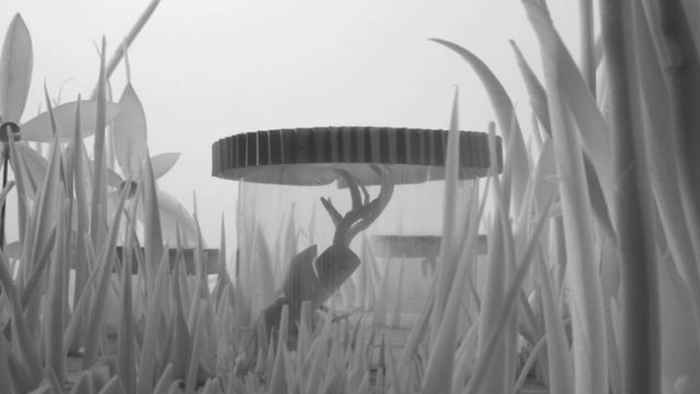
A winner of the BAFTA Award for Best Short Animation in 2010, I’m convinced The Eagleman Stag ought to receive far more attention and acclaim than it already has.
Michael Please’s stop-motion masterpiece concerns Peter Eagleman and his attempts to reconcile his perception of time, mortality, and transience. The result is a meditative perspective on life, on the things that we hold dear and the memories of our childhood that constitute our being, as well as our attempts at returning to them to regain our familiar childlike innocence. Armed with a disarmingly dark sense of humor, and bolstered by David Cann’s fantastic vocal performance, The Eagleman Stag seems like the best candidate as an example of the modern day allegory, rife with a mishmash of symbols and ideas intertwined with Please’s fantastic text.
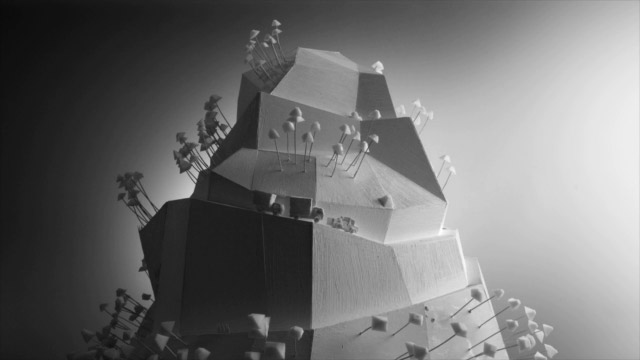
In between vignettes encompassing Eagleman’s entire life, Peter states rather objectively: “My initial moment of consciousness, with nothing else to compare it to, lasted a lifetime. And yet, the moment that followed became but half a lifetime, and therefore must have passed, twice as quickly.” Such ruminations fill the entirety of the short, though few animated shorts before and since then can boast of the beautiful harmony between the visuals and the text, both of which come together in fascinating form under Please’s directorial hand.
Skhizein (2008) by Jérémy Clapin
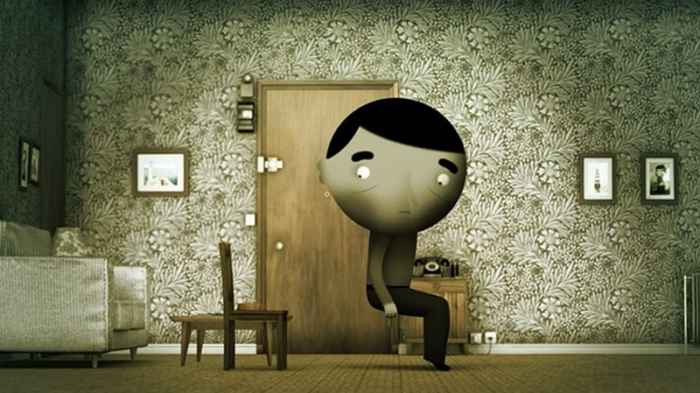
Speaking of an exceptional balance between visuals and the narrative, we come to Jérémy Clapin’s 2012 short, Skhizein. The film tells the story of Henri, who upon being struck by a 150-ton meteorite, finds himself precisely 91cm away from where he ought to be. There appears to be no other evidence for the impact of the meteorite, (at one point, a seemingly indifferent therapist asks Henri, “So there was no actual damage after all, is that right?”) yet its effect on Henri remains, he is a distance away from where he is able to interact with objects.
Life after the meteorite’s impact is problematic for Henri, as he struggles to deal with the spatial incongruence thrust upon him, and simple things like picking up the phone or urinating become difficult for him to achieve. Henri’s predicament seems to be an apt metaphor for schizophrenia and other forms of mental illness, in which one might feel oneself slowly dissociating from the world. The external environment in Skhizein isn’t hostile, but isn’t particularly caring either: the other individuals in the film not only do not find Henri’s predicament alarming but struggle to understand it at a basic level. Henri, it seems, is entirely alone.
Aside from the frankly brilliant premise, the art style is notably restrained as well. Jennie Kermode writes in a review of the short, “the palette of the film uses soft edges, gradually encroaching darkness, lines of chalk and the gradual intrusion of disordered shapes in a way that mimics the hallucinatory symptoms often described by sufferers of (schizophrenia). Ordinary objects just slightly out of alignment hint at the approaching chaos.” Clapin achieves quite a bit in the short span of 15 minutes, not simply accurately capturing moments of disorientation we all might experience, but doing so with an art direction that is both pleasantly engaging and utterly thought-provoking, making it perhaps one of the best shorts to have been released in a past decade.
Exercising Surrealism
The animated short similarly lends itself to surrealism, dating back to notable shorts such as Dough for the Dodo (1949) which takes inspiration from Salvador Dali, to various works from Estonian animator Priit Pärn, including Breakfast on the Grass (1988). In recent times, as most begin to embrace the nonlinear and non-chronological nature of works, several shorts, including the two listed below, reflect ideas and sensibilities from the surrealist movement.
Rabbit (2005) by Run Wrake
Following the trend of strange shorts, Rabbit by Run Wrake “is a classic of digital surrealism”. Stephen Cavalier, a writer from the online animation magazine Skwigly, describes the film as “Made with CG cutout techniques similar to contemporary TV animation like South Park and Peppa Pig, the short combines innocent imagery from old children’s books into a darkly funny Švankmajer-esque parable about consumerism and the corruption of innocence.”
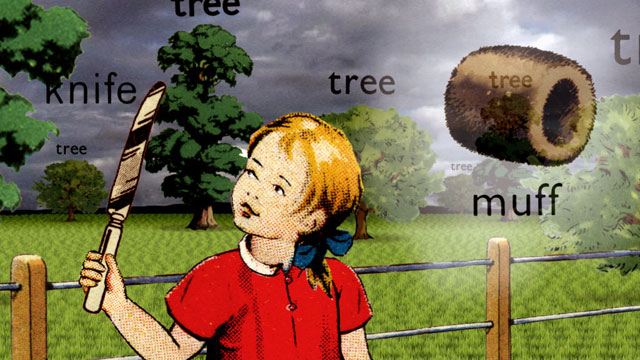
Run Wrake’s most well-known short takes it a step further by largely abandoning conventional logic and a coherent narrative altogether. Instead, the film anchors itself on a hodgepodge of symbols, ideas, and faint allusions with no discernible true meaning. Employing the art style of traditional “Dick and Jane” basal readers from the 1900s, the film tells the story of a pair of siblings who find a rabbit in their backyard. Upon dissecting it, they discover a living idol which has the ability to turn flies and insects into jewels, ink, and feathers. The siblings, understanding the potential of this, manipulate the idol by offering it strawberry jam and wreaking havoc in their garden, reaping a huge amount of profit by exponentially increasing the number of flies until their lawless deeds eventually come home to roost.
The entire film’s runtime comes just below ten minutes, and in its entirety, lacks any form of dialogue, narration or text whatsoever, besides the words indicating the various objects as seen in the images above. Most of all, unlike the aforementioned two films that rely heavily on the significance of the main character or narrator, this short gives the appearance of absolute authorial indifference. Simply following its own internal logic, Rabbit neither impresses a heavy-handed moral nor acts as a cautionary tale: it possesses the potential to do either of those things but allows the viewer to draw the lines themselves. Ultimately, it seems that Rabbit best fits the comparison given to it by Stephen Cavalier, writer for an online animation magazine Skwigly, in which it has the same effect as the age-old Rorschach test, “reveal(ing) people’s inner subconscious neurosis” and acting as a catalyst for his/her deepest fears.
Cat Soup (2001) by Tatsuo Satō
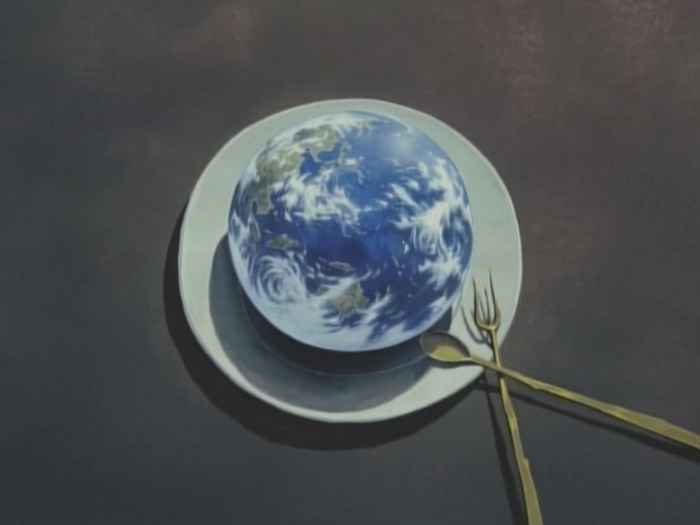
While Rabbit utilized a more CG-oriented approach to the creation of a surrealistic world, Tatsuo Sato’s quintessential piece Cat Soup returns to the roots of traditional animation. The short concerns an anthropomorphic cat Nyatta and his attempts at saving his sister Nyako’s soul. What follows is a loosely chronological series of vignettes and occurrences that involve the siblings, from the explosion of a giant weather-influencing circus bird who drowns out the whole world, to the siblings meeting an elephant made entirely of water, Cat Soup concerns itself less with characters or internal logic than creating an atmosphere of surreality. The result is a fever dream of abstract ideas swimming together in the same pool: time, life, death, suffering, isolation, helplessness, peace and tranquility bounce off one another from sequence to sequence, and all that seems to drive our feline duo is the familial bond of siblinghood.
The plot points sound overwhelming, but Tatsuo Sato’s direction, as well as the heartwarming visuals, inspired by manga artist Nekojiru, make the short surprisingly palatable. Borrowing from a myriad of styles and techniques, Cat Soup pushes not simply the boundaries of the animated short but amplifies the traditions of animation that came before it, utilizing the full potential of the medium with an incredibly surreal narrative. Encompassing the themes of existentialism, religion, transience and the metaphysical, Sato’s experimental masterpiece, which was released at the beginning of the 21st century, seems to herald the arrival of more complex and surreal animation styles, opening avenues for animation that no other medium can tap into. For that alone, Cat Soup stands as one of the quintessential animated shorts of the 2000s.
Advancing Genre and Style
Alma (2009) by Rodrigo Blaas
Animation, because of its great potential, has often been capable of traversing the uncanny valley more adeptly than live-action works, since the broadness of the medium allows for quite essentially anything to be created on the blank canvas. Rodrigo Blaas’s 2009 work showcases this particular quality of animation best: achieving quite simply with animation what many live-action horror directors attempt (and often fail) to do, create an atmosphere of mounting tension, uneasiness and discomfort without an underlying sense of its contrivance. In fact, simplicity appears to Alma’s greatest trait.
Our main protagonist is introduced with a rather lighthearted tone, and for the first few minutes of the short, there are few indications of its dark nature. Slowly, however, the revelation of the doll store as well as the dolls themselves hint to a more sinister presence, and seemingly harmless objects and motifs from before take on a darker tone as the viewer realizes what’s going on. Created and directed by ex-Pixar animator Rodrigo Blaas, Alma is efficient in its simplicity. The cuts between Alma’s point of view and the gradual pan shots of the doll shop create an increasingly claustrophobic atmosphere, and by utilizing to its fullest extent the sheer creepiness of dolls, Blaas is able to essentially instill horror, albeit the understated and restrained type, within the audience.
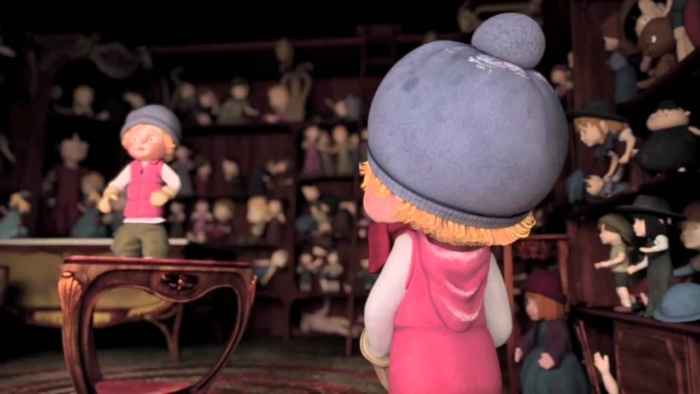
Alma is one amongst many animated “horror” shorts to have been released in the past two decades which range from extensions of the “material horror in stop-motion” style that Tim Burton popularized, to the CG-entrenched and narrative-based, such as Richard Hickey and Dave Eggers’ Francis (2014). In truth, horror is often an easy target for film/animation school students or the like, because in theory its effectiveness is easily achieved: combine a few shots of the dark alongside horrified facial expressions and add a few high-pitched sounds, and you create horror. The myriad of short horror movies, animated or live-action, seems to attest to this fact. Good horror films with proper pacing and suspense are undoubtedly hard to come by, and so it is this precise sense of restraint, as well as its non-reliance on the grotesquerie in animation or overtly startling technical elements, that rank Alma above its contemporaries.
Franz Kafka’s A Country Doctor (2007) by Kōji Yamamura
The other entry in our exploration of style and genre is Kōji Yamamura’s strange, stylistic take on Franz Kafka’s famous short story, ‘Ein Landarzt’. The 21-minute short reportedly took a year and three months to complete, the primary medium being oil marker pens, colored pencils, and ink on paper, creating a visual style wherein the colors are largely muted and mellow. A Country Doctor is unnerving, to say the least: the ink-on-paper medium allows Yamamura to play with proportions and sizes without limitations, and throughout the short there is a nagging tension between that which is static on the page and the objects in motion, the proportions of which constantly change to reinforce disorientation upon the viewer.
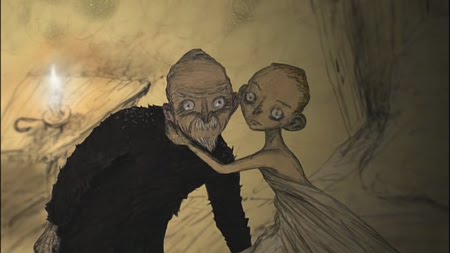
Adding to that is the music and sound, which consists largely of high-pitched melodies from string instruments and a song about death that is sung by a chorus of identical children. Kafka’s story is surrealistic enough on its own, as the narrative seems to merely be a string of events unfolding one after another, concerning the sane protagonist amidst a malicious and evil environment. Unlike the surrealistic works mentioned above, Yamamura anchors his visual style upon the text in such a way that the audience is dealt a double blow: atop following Kafka’s surreal narrative, the accompanying visuals heighten the atmosphere, emotions, and situations, translating Kafka’s text faithfully whilst creating a world that is Yamamura’s own.
The visual style takes a bit of getting used to, as most experimental and stylistic films do, but the final effect is eerie, phantasmagorical and bleak, capturing the oppressiveness and hidden maliciousness characteristic to most of Kafka’s environments. A Country Doctor is an excellent example of style supporting substance, in which the potentialities of the form, under the hand of a skilled director, gives form to a work of art that ultimately belongs to two masters.
Utilizing Technologies
We’ve looked at a number of disparate and varied works from the 2000s so far, though there is a nagging sense that perhaps the ‘short’, which is often seen as a medium for those still learning the ropes of creating a full feature film, is not utilizing all the tools at its disposal. Computer-Generated Imagery (CGI) has come a long way in the past few decades, and it’s constantly getting more and more sophisticated, as seen from the feature films of today such as Cameron’s Avatar (2009) to Garland’s Ex Machina (2014). Yet, one particular short is able to employ it to its fullest potential, creating a visual feast that is nothing short of awe-inspiring.
Wanderers (2014) by Erik Wernquist
Directed by Erik Wernquist, Wanderers is a journey through the Solar System, created from images taken by rovers and robotic spacecraft which were subsequently animated by Wernquist himself. Narrated by astronomer and thinker Carl Sagan, we see the great could-be of human technology in the near future: an interstellar elevator propels down to the surface of Mars, we see “the inside of a hollowed-out asteroid, pressurized and filled with a breathable atmosphere” (Wernquist) and space airships appear to approach and orbit Saturn’s colossal rings.
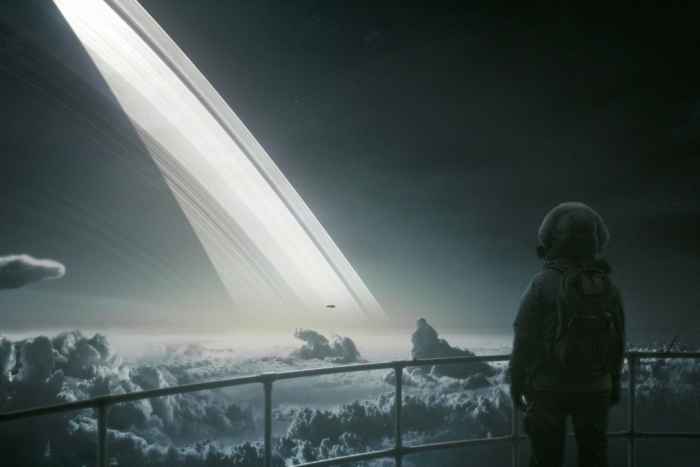
Barring hyperbole, the entire experience echoes the quintessential human condition. In one scene, Sagan quotes Herman Melville, saying “I am tormented with an everlasting itch for things remote. I love to sail forbidden seas, and land on barbarous coasts.” Confronting the audience with the great and expansive world beyond this small, tiny planet, we are enthralled by the sheer beauty of space, along with it the growing awareness of the immense possibilities the human race can undertake. It’s a breath of fresh air to the pessimism of the dystopia which has seemingly infected everything, instead, it presents a meditative and hopeful outlook toward our collective tomorrow. The self is entirely eradicated in the 5-minute runtime of this short, leaving behind a perspective opened to that which is awe-inspiring, powerful and most of all, universal.
Sagan’s intricate and lovely prose is combined perfectly with Wernquist’s incredible visuals to create a work of art that is powerful and wholly relatable to every viewer. Utilizing CGI to its greatest potential, Wanderers exemplifies all the best traits of the 21st-century psyche, our generational leap in technology, its improvements to our lives, and the notion that we will one day find the tools necessary to expand as the human race.
The animated short, as with other artistic mediums, has taken leaps and bounds in development since the advent of the 21st century. It has been used to tell stories of moral and psychological roots, push genres such as science fiction and horror, explore and exhibit surrealism and other forms, and expand the limits of conventional narratives. Like the feature film, or the novel, it is a medium of untold opportunities and avenues to explore, not limited by reality, and ultimately it is heartening to see the continued creation of works, such as those listed above, which may someday be seen as classics in their own right.
What do you think? Leave a comment.
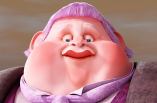

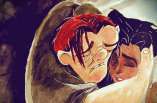








Outstanding attention to detail on all of these shorts. Hooked from the very beginning.
Japanese creepy horror and Kafka were made for each other.
Always felt Kafka speaks to the Japanese in a direct, intuitively intelligible way.
Hahahaha I suppose that’s also because the Japanese, more than anyone else, seem to tend toward the strange and weird in their media. I am glad to have examined Yamamura’s Country Doctor though, it isn’t by any means easily digestible, but it presents an interesting adaptation nevertheless.
Each time I watch Wanderers, I have a tendency to burst into tears, knowing these scenes will not happen in my life time, but I’m glad there are visionaries like Elon Musk, because of crazy people like him, my grandsons might have a chance to procure a ticket to Mars , or even further.
Shouldn’t be just a film. It should be our checklist.
That’s some spine-chilling stuff.
The mix between the images and Carl´s words was very moving.
I cried.
I’m delighted you’ve had such a visceral experience to this particular work. I felt it fitting as the final entry because it does so many things I feel the contemporary animated short has neglected. It’s so simple, too. Sagan’s words echo throughout time and space, and has only grown in relevance, so it is no surprise that Wernquist’s visuals have risen to match his accompanying text. It’s truly an outstanding short.
I love short animations
I love short animations
cool
Skhizein is beautiful. It does an extremely good job of representing schizophrenia.
Remarkable animations. I’m overwhelmed by all of it. Good work! Also, a very deep and thought-provoking work.
Cat Soup is the best short I’ve seen in years literally, but then the last years of my life have not been very weighty.
Eagleman Stag is an interesting topic paired with flawless animation.
Love this. I’m gonna grab onto any of Kafka’s stories I can stumble across on the first possible opportunity!
Great collection of masterpieces.
Franz Kafka’s A Country Doctor is quite simply one of the most beautiful pieces of art I have ever seen. Astounding.
Many of these are aesthetically pleasing and emotional in story… Thoroughly enjoyable.
Awesome, simply awesome list.
thank you for the kind words. I had initially titled this article the underrated shorts of the 21st century, because I intended to explore the more obscure animated shorts that weren’t getting the attention they needed. I’m glad to be able to introduce them to people interested and passionate about animation.
I’m not usually a literature oriented guy, but The Eagleman Stag is just genius.
Kafka’s atmosphere in the short film is just crazy.
These much better than most of the mainstream feature films that are released nowadays.
I’d literally never heard of any of these. I’m so grateful that these were brought to my attention. I don’t think I ever would’ve known about them otherwise. Thank you!
Glad for your kind words, Keane. Hope you enjoy them all. I wish I could experience the eagleman stag as a wide-eyed fifteen-year-old again, and be confronted with its endearing and experimental nature that opened my eyes to the potential of the short.
A great discussion. Thank you for sharing these. It is always great to be introduced to meaningful art.
Thank you Sarai. It’s great to hear you’ve enjoyed it, and I have great respect for the constant contributions you make to this site. Your articles are of wonderful quality and I’m certainly looking forward to your next one. 🙂
Excellent article! Thank you for a most informative, illuminating and entertaining read. More please.
Thank you for your kind words, Amyus! Keep up the great work too, its wonderful watching this community grow with talented writers such as yourself.
This is incredible.Thanks for introducing us to these shorts.
Great article. It would be nice to have a curated resource listing good animated shorts like this one but in a much wider scale because I am sure there are other great ones out there that are just as underrated. Perhaps you’d like to create and maintain one, if it hasn’t been done yet?
Thank you for the kind words, Manny. I think i might create a letterboxd list sometime soon, and I’ll send you the link once it’s up and running.
I really didn’t know that these short films existed. Why aren’t they well known? Good job on the presentation and thank you for sharing.
Oh my goodness, I love this article. You did such a good job writing it. It’s very thorough and well thought out.
Thanks for introducing me to some new media
I am now eager to see more animated shorts. I have seen a couple done by Walt Disney, and am excited for more to come. Sometimes, the best lessons may come 40 minutes or less.
Brilliant analysis and excellent discussion. These were all a pleasure to watch and have definitely made me want to explore animated shorts!
I have always been fond of animated short films and I look forwars to what the 21st century filmmakers have in store for us.
Amazing Animation